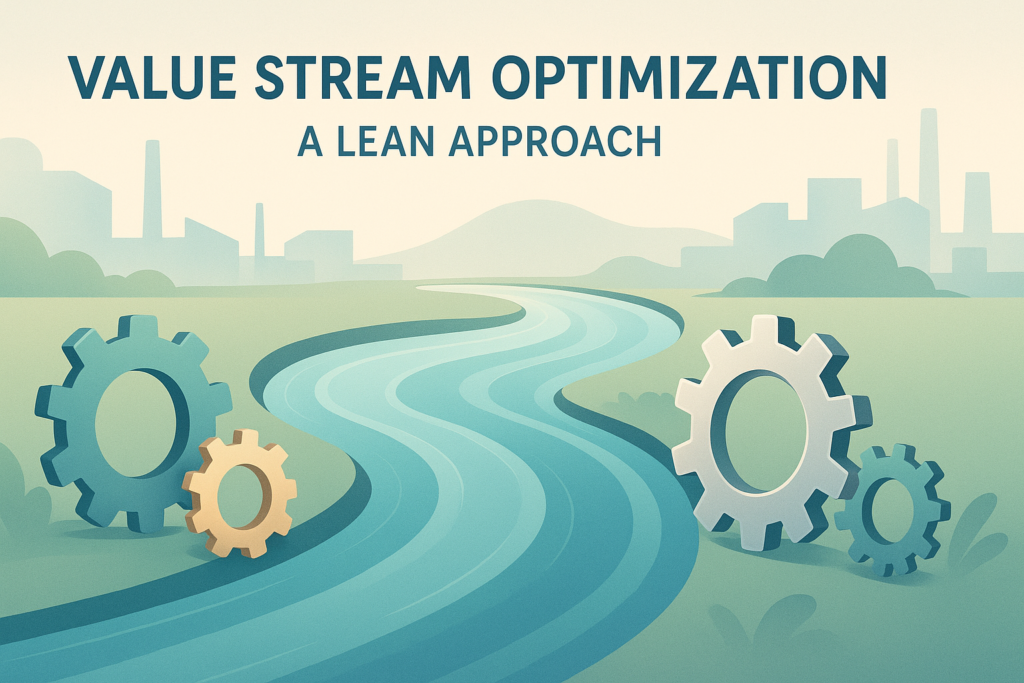Value Stream Optimization: A Lean Approach
Welcome to the exciting world of Value Stream Optimization! 🚀 If you’ve been searching for ways to enhance your operations and reduce waste, you’ve landed in the right place. This blog post will walk you through the essentials of value stream optimization using a lean approach, making your processes smoother and more efficient. Let’s dive in!
Table of Contents
1. Introduction to Value Stream Optimization
2. What is a Lean Approach?
3. Steps to Optimize Your Value Stream
4. Benefits of Value Stream Optimization
5. Conclusion
6. FAQs
Introduction to Value Stream Optimization
Value Stream Optimization is a method used to analyze and improve the way value flows from the start to the end of a process. Think of it as a map that helps you identify where your resources are being wasted and how you can fix it. By optimizing these streams, businesses can deliver better products/services faster and at a lower cost.
What is a Lean Approach? 🤔
Before jumping into optimization, let’s clarify what a lean approach is. Lean is all about maximizing value while minimizing waste. It’s a mindset that focuses on creating more value for customers with fewer resources.
By adopting lean principles, organizations can streamline their operations, making them more efficient and effective. This approach is not just about cutting costs—it’s about improving processes and quality, which ultimately boosts customer satisfaction.
Steps to Optimize Your Value Stream
Optimizing a value stream involves several key steps. Here’s a simple guide to get you started:
1. Identify the Value Stream 📈
Begin by mapping out your entire process from start to finish. Identify every step involved in delivering your product or service. This map should include both value-added and non-value-added activities.
2. Analyze and Identify Waste 🔍
Once you have your map, look for areas where resources are wasted. This could be in the form of time, materials, or labor. Common types of waste include overproduction, waiting, and defects.
3. Implement Lean Tools 🛠️
Use lean tools such as 5S (Sort, Set in order, Shine, Standardize, Sustain), Kaizen (continuous improvement), and Kanban (visual scheduling) to address and eliminate waste.
4. Continuously Improve 🔄
Optimization is not a one-time task. Regularly review and refine your processes to ensure they remain efficient. Encourage a culture of continuous improvement within your team.
Benefits of Value Stream Optimization
Optimizing your value stream offers several advantages:
✅ Improved Efficiency: Processes are streamlined, reducing cycle times and improving throughput.
✅ Cost Reduction: By eliminating waste, you can significantly cut down on unnecessary expenses.
✅ Enhanced Quality: With fewer defects and rework, the quality of your output improves.
✅ Better Customer Satisfaction: Faster delivery times and higher quality often lead to happier customers.
Conclusion
Embracing value stream optimization through a lean approach can transform your business operations. By focusing on reducing waste and enhancing value, you not only boost your bottom line but also create a more agile and responsive organization. So, why not start mapping out your value streams today? 😊
FAQs
1. What is the difference between value stream mapping and process mapping?
Value stream mapping focuses on the flow of materials and information to deliver a product/service, while process mapping is more detailed and focuses on the steps within a specific process.
2. How often should I review my value streams?
It’s advisable to review your value streams regularly, at least quarterly, to ensure ongoing efficiency and improvement.
3. Can small businesses benefit from value stream optimization?
Absolutely! Small businesses can gain significant advantages by optimizing their value streams, such as reduced costs and improved efficiency, which are crucial for growth.
4. What are some common lean tools used in value stream optimization?
Some popular lean tools include 5S, Kaizen, Kanban, and Value Stream Mapping.
I hope this guide has provided you with valuable insights into value stream optimization. Feel free to leave a comment if you have more questions or share your experiences with lean practices. Happy optimizing! 🎉











